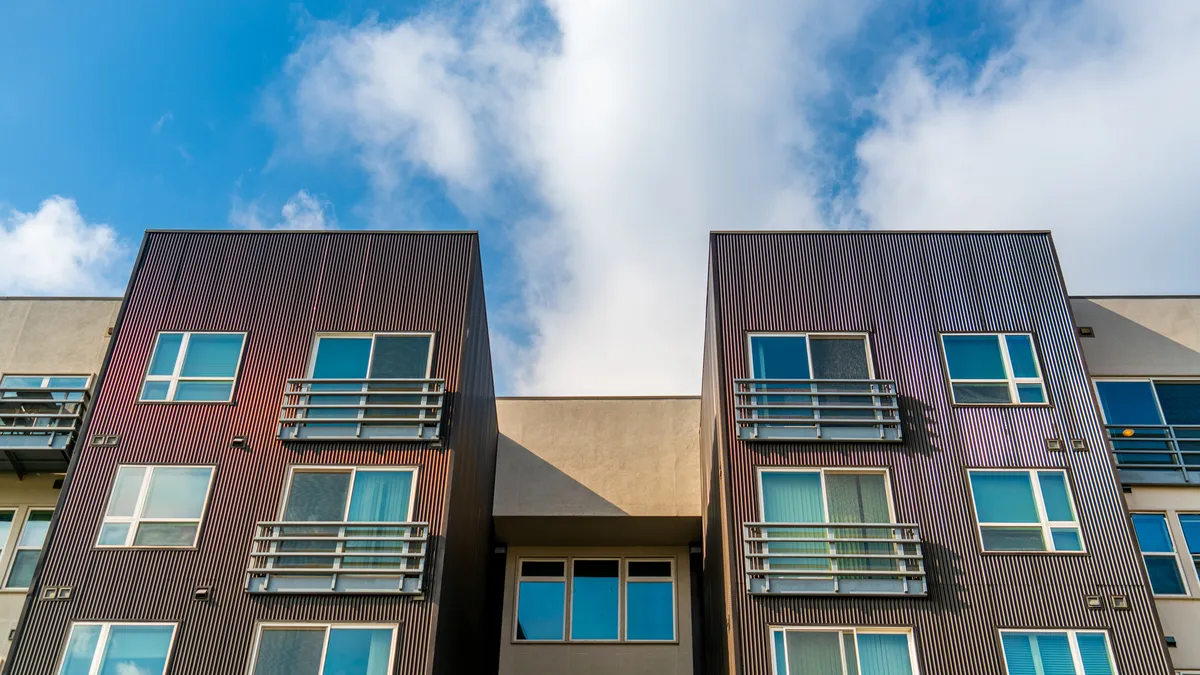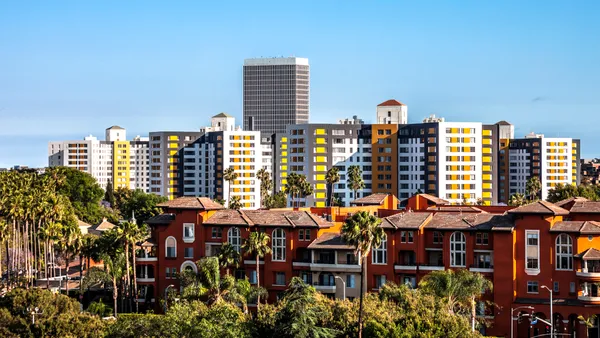Dive Brief:
- The national average asking rent remained flat in September at $1,718 per month, according to the latest Yardi Matrix Multifamily National Report. At the same time, year-over-year rent growth fell 150 basis points to 9.4%, marking the first time since July 2021 that rents have risen less than 10% YOY.
- Rent growth remains strong in each of the report’s top 30 metros, with the top nine metros showing growth over 10% YOY. Miami (14.3%), Orlando, Florida (13.3%), and Nashville (13.2%) still top the list.
- Strong job growth and a shift to hybrid working environments has contributed to some recovery in the gateway markets, which lost many apartment residents during the COVID-19 pandemic. Five of the six metros where occupancy rose YOY are gateway markets, led by San Francisco, New York City and Chicago.
Dive Insight:
Rents have risen 6.6% since the start of the year — still far higher growth than in a typical year, when rents usually rise 2.9% by September. Sacramento, California; Orange County, California; and Boston led the top 30 metro markets in rent growth from August to September at 0.7%.
While lease renewals have declined for the last five months, the lease renewal rate rose 60 basis points in August, up to 59.1%. Renewal rent growth also rose 50 basis points YOY, up to 10.8%. Renewal rents have jumped 18.3% since the start of the COVID-19 pandemic in March 2020, while asking rents have risen 21.9% over the same timeframe.
| Market | YOY Rent Growth, September 2022 | YOY Rent Growth, August 2022 | Difference |
|---|---|---|---|
| Miami Metro | 14.3% | 16.7% | -2.4 |
| Orlando, Florida | 13.3% | 16.9% | -3.6 |
| Nashville, Tennessee | 13.2% | 14.8% | -1.6 |
| Dallas | 11.9% | 14.2% | -2.3 |
| Indianapolis | 11.6% | 12.5% | -0.9 |
| Tampa, Florida | 11.6% | 14.0% | -2.4 |
| Orange County, California | 11.3% | 13.5% | -2.2 |
| Raleigh, North Carolina | 10.8% | 13.5% | -2.7 |
| Charlotte, North Carolina | 10.4% | 12.7% | -2.3 |
| San Jose, California | 10.1% | 11.9% | -1.8 |
Yardi has declared an end to “accelerated rent growth from the pandemic,” and attributes the stabilization of the national average asking rent to the ongoing cooling of the economy, and in particular the Fed’s move to raise rates in order to bring down inflation. This is expected to reduce household formation and thus demand for housing.
These trends are expected to dovetail with seasonal deceleration to slow down rent growth through the winter. Rent decreases are also starting to take hold in luxury units, with rents in the “Lifestyle” category falling 0.3% nationally in September.
Despite this flattening, Yardi emphasizes that market fundamentals remain strong. Multifamily absorption was 223,000 through August, reflecting a pre-pandemic norm. Asking rents remain at record highs, and occupancy rates have held steady around 96% since June 2021











